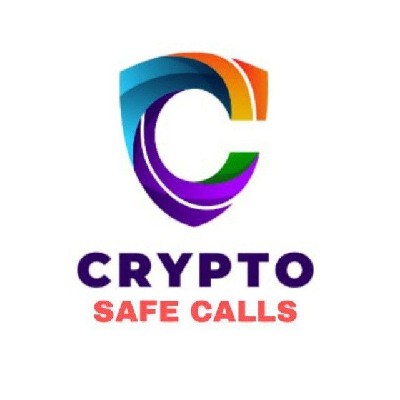
SKALE priceSKL
SKL/USD price calculator
SKALE market Info
Live SKALE price today in USD
Do you think the price of SKALE will rise or fall today?
Now that you know the price of SKALE today, here's what else you can explore:
How to buy SKALE (SKL)?How to sell SKALE (SKL)?What is SKALE (SKL)What would have happened if you had bought SKALE (SKL)?What is the SKALE (SKL) price prediction for this year, 2030, and 2050?Where can I download SKALE (SKL) historical price data?What are the prices of similar cryptocurrencies today?Want to get cryptocurrencies instantly?
Buy cryptocurrencies directly with a credit card.Trade various cryptocurrencies on the spot platform for arbitrage.SKALE price prediction
When is a good time to buy SKL? Should I buy or sell SKL now?
What will the price of SKL be in 2026?
In 2026, based on a +5% annual growth rate forecast, the price of SKALE(SKL) is expected to reach $0.01217; based on the predicted price for this year, the cumulative return on investment of investing and holding SKALE until the end of 2026 will reach +5%. For more details, check out the SKALE price predictions for 2025, 2026, 2030-2050.What will the price of SKL be in 2030?
About SKALE (SKL)
What Is SKALE?
SKALE is a Layer-2 scaling solution, integrated into Ethereum, designed to address the critical issue of network congestion in blockchain networks. Launched in 2018 by the N.O.D.E. Foundation, SKALE acts as an open-source platform enabling high-throughput, low-latency, and cost-effective environments for the development of decentralized applications (dApps). It employs Elastic Sidechains to allow developers to create dApps not directly on the Ethereum mainnet but on SKALE sidechains, which are powered by the SKALE token, SKL. This innovative approach allows users to configure specific sidechains and establish an environment conducive to dApp creation, offering a solution to the high volume of developers utilizing a network for dApp development.
SKALE’s uniqueness stems from its ability to reduce operational costs surrounding dApps and alleviate network congestion on Ethereum. It provides fast transaction throughput and accelerates the verification process compared to native operations on Ethereum. The network’s architecture supports an expanding array of dApp-specific chains, making it a versatile and high-performance blockchain solution for running Ethereum-compatible smart contracts.
Resources
Whitepaper: https://skale.space/whitepaper
Official Website: https://skale.space/
How Does SKALE Work?
SKALE operates by deploying Elastic Sidechains, which are highly configurable blockchains allowing users to select their chain’s size, consensus protocol, virtual machine, parent blockchain, and additional security measures. These sidechains operate as independent blockchains integrated with their parent network or main chain, maintaining interoperability through a two-way communications peg, thus enabling smart contract communication between the sidechains and the Ethereum mainnet. This mechanism significantly improves the speed and scalability of the main network, allowing Ethereum-built dApps to compete with Web2 applications in terms of cost and throughput.
The SKALE Network utilizes a network of decentralized nodes, subdivided into Node Cores and subnodes, to facilitate transactional activity on the network. The SKALE Manager is central to this architecture, acting as the gateway to all other smart contracts in the ecosystem and automatically assigning virtualized subnodes to help users determine their budget and resource requirements. This elastic capacity mechanism allows each SKALE Node to run multiple sidechains simultaneously, offering developers a quick provision of highly configurable blockchains without compromising security, storage, or computational power.
What Is SKL Token?
SKL is the native utility token of the SKALE Network, playing a pivotal role in network operations. It is an ERC-777 token, maintaining backward compatibility with ERC-20 platforms. SKL token holders or delegators stake their tokens to validators who operate the SKALE Network by verifying blocks, executing smart contracts, and securing the network. Validators, in turn, receive SKL crypto rewards for their efforts. Developers use SKL tokens to pay for Elastic Sidechain subscriptions, and both delegators and validators receive SKL crypto rewards derived from the subscription fees paid by developers and the inflation of tokens into the network. SKL also facilitates on-chain voting, controlling all economic parameters on the SKALE Network.
SKALE's Impact on Finance
SKALE’s impact on finance is profound, as it provides a scalable, efficient, and cost-effective solution for developing decentralized applications on the Ethereum network. By alleviating congestion and reducing operational costs of dApps, SKALE promotes the development of more sophisticated and user-friendly decentralized financial (DeFi) applications, fostering innovation and growth in the financial sector. The network’s high throughput and fast transaction processing capabilities enable real-time, secure, and seamless financial transactions, making it a preferred choice for developers aiming to create advanced financial solutions on the blockchain. SKALE’s contribution to enhancing the scalability and functionality of Ethereum-based dApps is pivotal in the evolution of decentralized finance, paving the way for a more inclusive and decentralized financial ecosystem.
What Determines SKALE's Price?
The price of SKALE (SKL) token, like other cryptocurrencies, is influenced by a myriad of factors, reflecting the dynamics of the cryptocurrency market. Cryptocurrency price predictions are often speculative, given the inherent crypto market volatility, but they can be shaped by trends, cryptocurrency news, and market analysis. The value of SKL is closely tied to the demand and supply dynamics within its ecosystem, developments in the SKALE network, and broader cryptocurrency market trends. Cryptocurrency enthusiasts and experts often scrutinize cryptocurrency charts and conduct extensive cryptocurrency analysis to gauge the potential price movement of tokens like SKL, considering factors like cryptocurrency adoption, technological advancements, and market sentiment in their evaluations.
In the quest to determine the potential cryptocurrency price in the future, especially for tokens like SKL, many turn to cryptocurrency events, discussions with cryptocurrency influencers, and insights from cryptocurrency experts to understand the prevailing cryptocurrency trends and make informed predictions for 2023 and beyond. Cryptocurrency trading strategies, crypto portfolio management, and an understanding of cryptocurrency risks and regulation are crucial for both beginners and seasoned investors looking to buy cryptocurrency on leading exchanges such as Bitget. The ongoing developments in the SKALE network, its contribution to the blockchain ecosystem, and its adoption by developers and users will play a significant role in shaping the SKL price trajectory, making it a point of interest for those exploring the best crypto investment for 2023.
Bitget Insights




SKL/USD price calculator
SKL resources
Tags:
What can you do with cryptos like SKALE (SKL)?
Deposit easily and withdraw quicklyBuy to grow, sell to profitTrade spot for arbitrageTrade futures for high risk and high returnEarn passive income with stable interest ratesTransfer assets with your Web3 walletWhat is SKALE and how does SKALE work?
Global SKALE prices
Buy more
FAQ
Is SKALE (SKL) a good investment?
What is SKL token price prediction?
What is the use case of SKL token?
What wallets can I use to store SKL tokens?
How to stake SKL on SKALE network
What is SKALE tokenomics?
What is the current price of SKALE?
What is the 24 hour trading volume of SKALE?
What is the all-time high of SKALE?
Can I buy SKALE on Bitget?
Can I get a steady income from investing in SKALE?
Where can I buy SKALE with the lowest fee?
Related cryptocurrency prices
Prices of newly listed coins on Bitget
Hot promotions
Where can I buy SKALE (SKL)?
Video section — quick verification, quick trading









